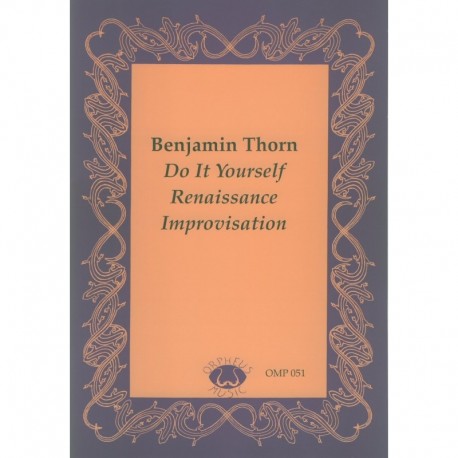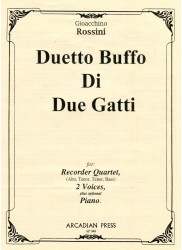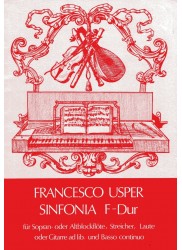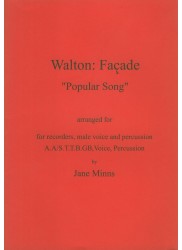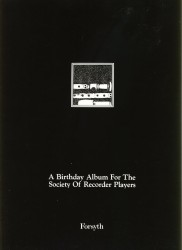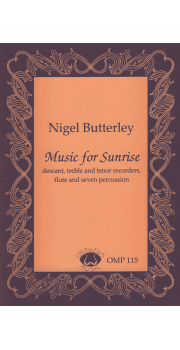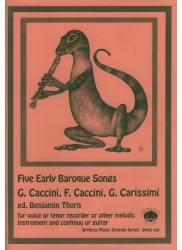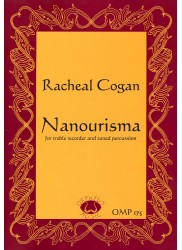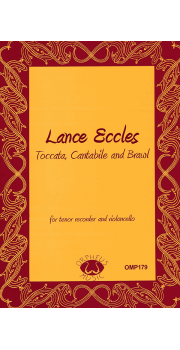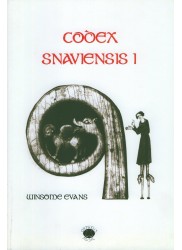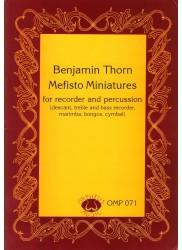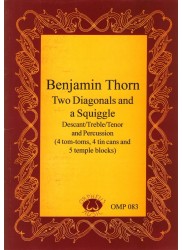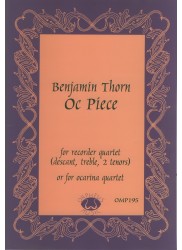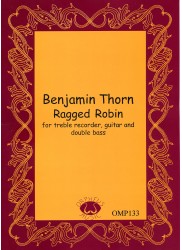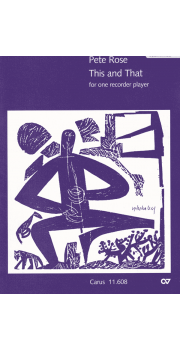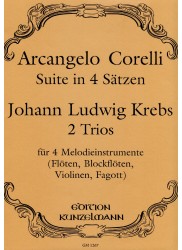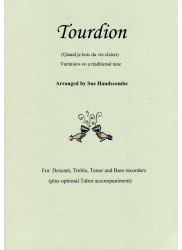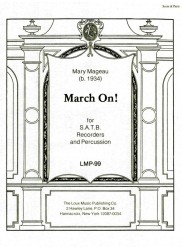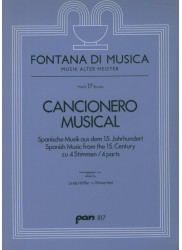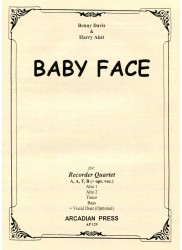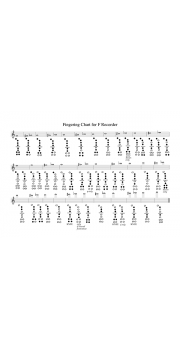No products
Prices are tax included
Renaissance Improvisation
Composer: Various
Arranger: Benjamin Thorn
Instrumentation: Various Combinations
Period/genre: Renaissance
Grade: Moderate
More info
A collection of *Renaissance* ground basses with sample melodies and advice as to how melodies can be improvised over them. Suitable both single players and groups.
1. Passamezzo antico 1
2. Bergamasca
3. La romanesca
4. Passamezzo moderno 1
5. La folla
6. Greensleeves (la romanesca)7. Recercada
8. Passo e mezzo
9. Passamezzo antico 2
10. Passamezzo antico 3
11. Passamezzo moderno 2
12. Basic Blues
13. Appendix: Examples of filling in intervals
_Part 16 pp._
OMP051 Benjamin Thorn Do it Yourself Renaissance Improvisation
Here is a basic introduction to the lost art of improvisation in Renaissance music. Benjamin Thorn gives excellent encouraging advice for the beginner on just how to take the first few steps. All improvisation is around a musical structure, and in this case the Renaissance has left us a variety of ground basses, some of which were used by composers up to the time of Mozart. For example, the Division Flute of 1708 is a whole collection of improvisations on ground basses by English composers/recorder players.
Dr. Thorn gives a description of the different types of ground basses including a modern blues and examples of each with simple improvisations. Playing these is a good place to start before venturing out on your own improvisations as they provide a melodic structure to begin with. At the back is a section with basic examples of filling in the intervals of a melody: i.e. second, third, fourth, etc.
Two points I wish to add. It would be helpful to have more on the chords and harmonies implied in the bass lines and some figured bass or sketched in examples of possible chords for the amateur keyboard player or guitarist to play from. Secondly as a sometime jazz player myself I know that the real inspiration for improvisation is to simply listening to other players and steal their licks! Have a listen to Pedro Menelsdorf on his fabulous album "Delight in disorder" and buy this book if your are inspired. Be prepared for some strange sounds at first (mistakes?) and above all, as Benjamin says, have fun!
Bernard Wells Cinnamon Sticks, November 2001
OMP051 Benjamin Thorn, Do it yourself Renaissance Improvisation.
Much of the surviving Renaissance dance music is structured upon ground basses, and is very short. Benjamin Thorn is convinced that the written music should be used as a starting point for improvisation, and this is supported by treatises from the period.
The aim of the book is to provide a way into Renaissance improvisation both to allow the music to be performed closer to the original intention and to have a lot of fun while exploring the various possibilities.
In the beginning of the book Benjamin Thorn gives some very useful guidelines for improvising. The pieces in the book are both starting points and models which can be used by both individuals and groups. The bass lines can be played on bass recorder or any other bass instrument. Most of the melody lines are intended to suit the treble recorder but are quite suitable for other instruments. The book also includes three quartets.
In the appendix there are simple examples of possible ways of moving across particular internals (ascending and descending 5th, 4th and 3rd) in the space of a bar.
The grounds occur in several different keys and tempos. Ground basses used in this are Bergamasca, Recercada, three different forms of the Passamezzo, La Romanesca and La Follia. "Basic Blues", a quartet piece written by Benjamin Thorn, is included in the book. The 12-bar blues is the twentieth-century equivalent of the ground bass.
"Do it yourself Renaissance Improvisation" is a very practical book, and is recommended for teaching improvisation to young children and adults alike.
Henrique Meissner, The Recorder Magazine, Winter 2001
30 other products in the same category:
Reference: AP048
Brand: Arcadian Press
Duetto Buffo di due Gatti
Composer: Rossini - GioacchinoInstrumentation: Treble - 2 Tenors - Bass +...
In StockReference: 5144
Brand: Fidula
Sinfonia in F Major
Composer: Usper - FrancescoArranger: Peter ThalheimerInstrumentation: Treble...
In StockReference: P251
Brand: Peacock Press
Facade: Popular Song
Composer: Walton - WilliamArranger: Jane MinnsInstrumentation: Treble -...
In StockReference: FZZ01
Brand: Forsyth
A Birthday Album for the Society of Recorder Players
Composer: Various Instrumentation: Various Combinations of Recorders - some...
In StockReference: OMP115
Brand: Orpheus Music
Music for Sunrise
Composer: Butterley - Nigel Instrumentation: Descant - Treble - Tenor +...
In StockReference: OMOS005
Brand: Orpheus Music
Five Early Baroque Songs
Composer: Caccini - Carissimi Arranger: Benjamin Thorn Instrumentation:...
In StockReference: OMOS005.pdf
Brand: Orpheus Music
Five Early Baroque Songs
PLEASE NOTE - DOWNLOADABLE PDF VERSION Composer: Caccini - Carissimi...
$29.50 -20%In StockReference: OMP175
Brand: Orpheus Music
Nanourisma
Composer: Cogan - Racheal Instrumentation: Treble + tuned Percussion (gongs...
In StockReference: OMP175.pdf
Brand: Orpheus Music
Nanourisma
PLEASE NOTE - DOWNLOADABLE PDF VERSION Composer: Cogan - Racheal...
$19.00 -20%In StockReference: OMP179
Brand: Orpheus Music
Toccata, Cantabile and Brawl
Composer: Eccles - Lance Instrumentation: Tenor + Violoncello Period/genre:...
In StockReference: OMP179.pdf
Brand: Orpheus Music
Toccata, Cantabile and Brawl
PLEASE NOTE - DOWNLOADABLE PDF VERSION Composer: Eccles - Lance...
$17.50 -20%In StockReference: OMP180
Brand: Orpheus Music
Codex Snaviensis 1
Composer: Evans - Winsome Arranger: Benjamin Thorn Instrumentation: Various...
In StockReference: OMP071
Brand: Orpheus Music
Mefisto Miniatures
Composer: Thorn - BenjaminInstrumentation: Descant - Treble - Bass +...
In StockReference: OMP071.pdf
Brand: Orpheus Music
Mefisto Miniatures
PLEASE NOTE - DOWNLOADABLE PDF VERSION Composer: Thorn -...
$19.00 -20%In StockReference: OMP083
Brand: Orpheus Music
Two Diagonals and a Squiggle
Composer: Thorn - Benjamin Instrumentation: Descant - Treble - Tenor -...
In StockReference: OMP083.pdf
Brand: Orpheus Music
Two Diagonals and a Squiggle
PLEASE NOTE - DOWNLOADABLE PDF VERSION Composer: Thorn - Benjamin...
$26.50 -20%In StockReference: OMP195
Brand: Orpheus Music
Oc Piece
Composer: Thorn - BenjaminInstrumentation: Descant - Treble - 2...
In StockReference: OMP133
Brand: Orpheus Music
Ragged Robin
Composer: Thorn - Benjamin Instrumentation: Treble - Guitar + Double Bass...
In StockReference: OMP133.pdf
Brand: Orpheus Music
Ragged Robin
PLEASE NOTE - DOWNLOADABLE PDF VERSION Composer: Thorn - Benjamin...
$28.00 -20%In StockReference: OMP051.pdf
Brand: Orpheus Music
Renaissance Improvisation
PLEASE NOTE - DOWNLOADABLE PDF VERSION Composer: Various Arranger:...
$17.50 -20%In StockReference: 11608
Brand: Carus
This and That
Composer: Rose - Pete Instrumentation: Descant - Sopranino + Voice...
In StockReference: PJT113
Brand: Peacock Press
Dances from The Bells of Blue Island
Composer: Walker - RoginInstrumentation: Sopranino + Violin and...
In StockReference: GM1267
Brand: Edition Kunzelmann
Suite in 4 movements/2 Trios
Composer: Corelli/Krebs Instrumentation: 4 Melody Instruments (Flute -...
In StockReference: P545
Brand: Peacock Press
Tourdion, Variations on a traditional tune
Composer: Blondeau - Pierre Arranger: Sue Handscombe Instrumentation:...
Out of stockReference: LMP99
Brand: Loux Music Publishing
March On!
Composer: Mageau - MaryInstrumentation: Descant - Treble - Tenor - Bass +...
In StockReference: PAN817
Brand: Pan
Cancionero Musical, Spanish Music from the 15th Century
Composer: VariousArranger: Linde Hoffer & V WinterfeldInstrumentation:...
In StockReference: P580
Brand: Peacock Press
Organum & Allelulia
Composer: Barber - Charlie Instrumentation: Tenor + Bass Viol - Harpsichord...
In StockReference: AP129
Brand: Arcadian Press
Baby Face
Composer: David/Akst - Benny/Harry Arranger: Stan Davis Instrumentation: 2...
In StockReference: PJT112
Brand: Peacock Press
Six by Four
Composer: Gardner - JohnInstrumentation: CounterTenor - Treble Recorder +...
In StockReference: OMFC
Brand: Orpheus Music
Fingering Chart - Laminated A4
Instrumentation: C & F Fingerings
In Stock

